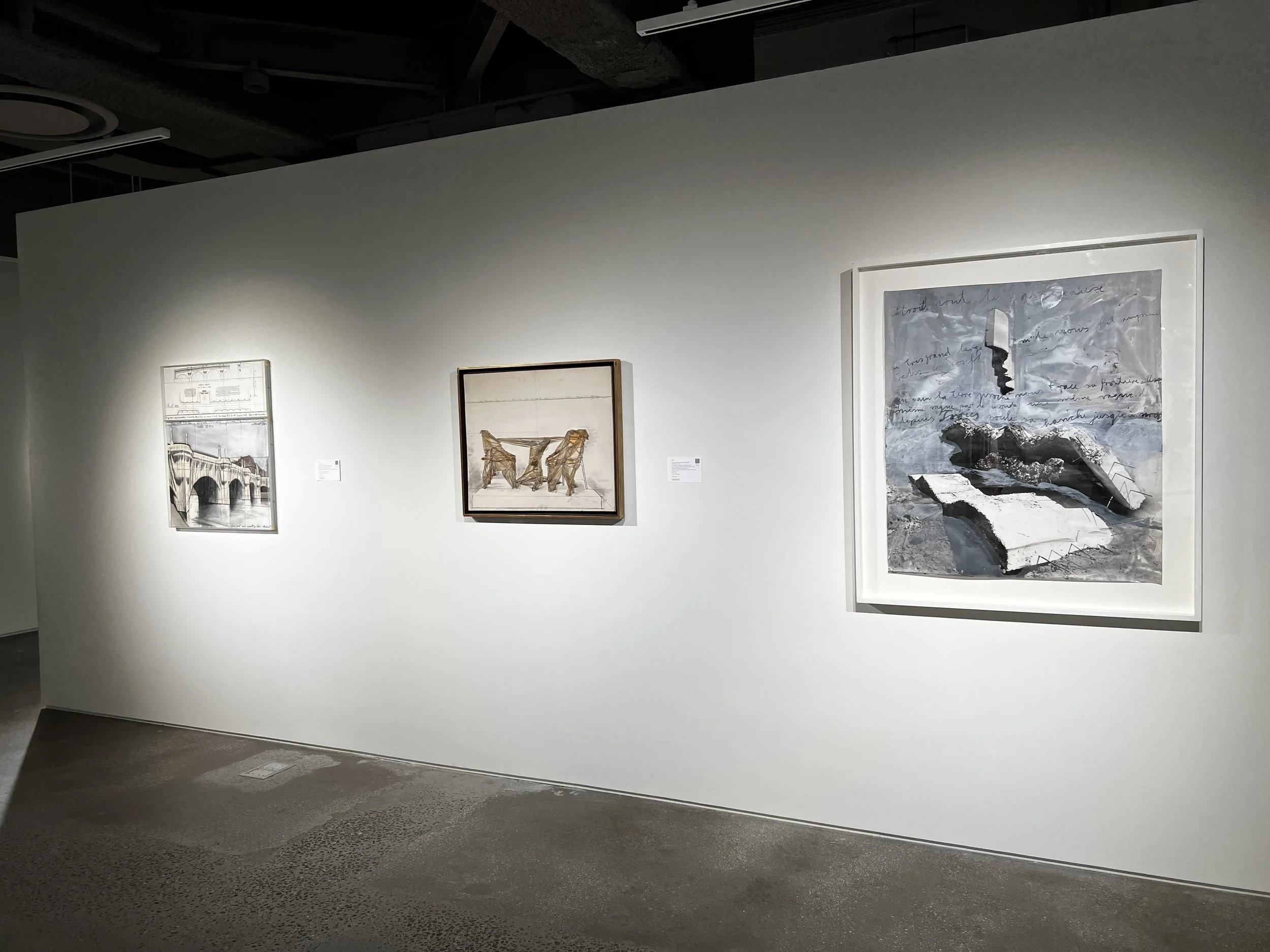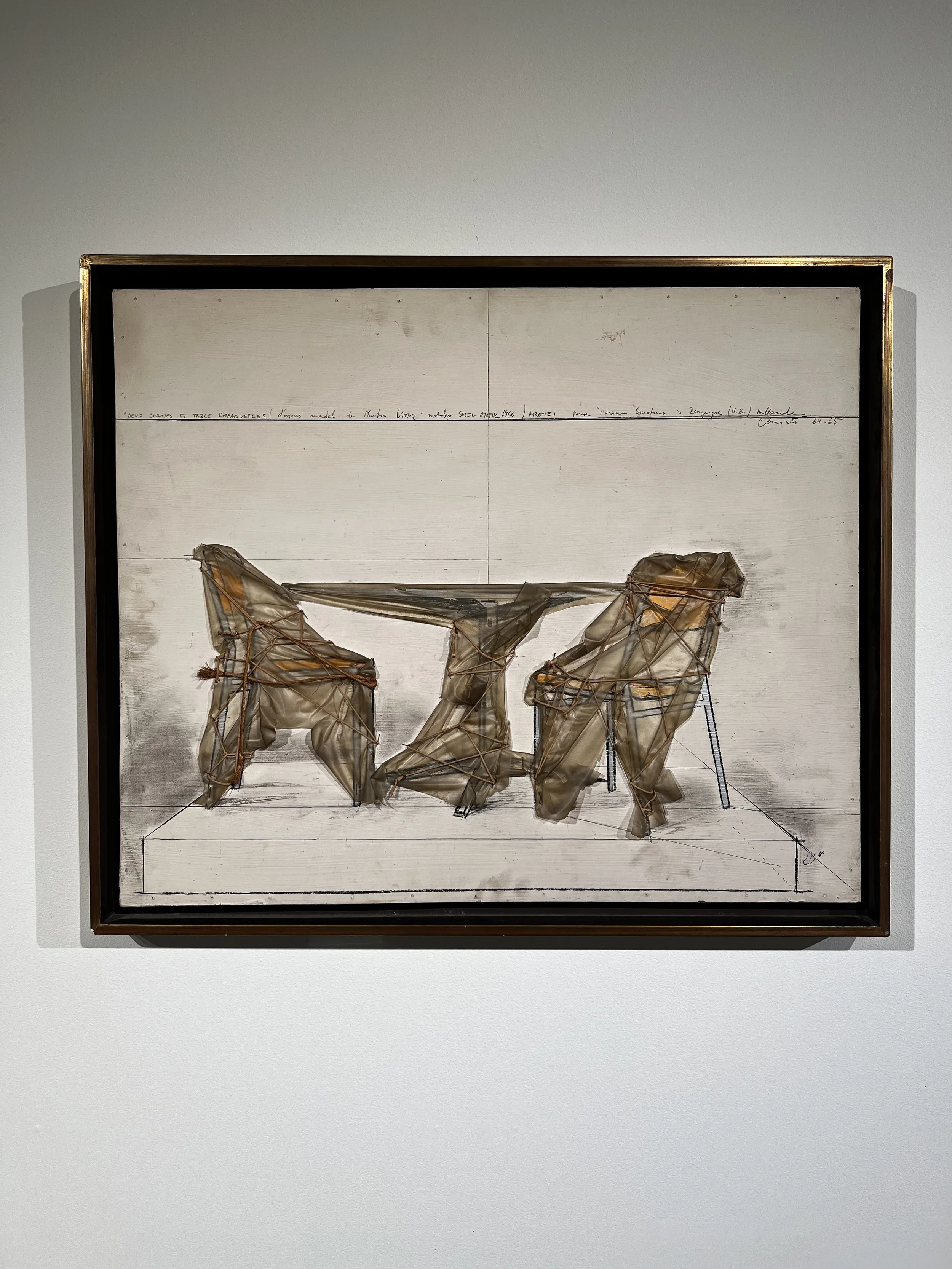Provoking Wonder: Enveloping the quotidian in “Deux chaises et table empaquetées” (1964-1965) by Christo & Jeanne-Claude
Written by Nínive Vargas de la Peña for Sotheby’s Contemporary Curated. March 2022.
Wrapping objects in fabric, paper or plastic, Christo and Jeanne-Claude alienate them from their conventional roles. Landmarks and monuments are shrouded to efface their intricate decorations and immediately recognizable features. The most stimulating innovation to ready-mades since Marcel Duchamp, the artists return these objects to their inherent state, estranging them from their surroundings and bathing them in a new poetic aura. In the drawing Deux chaises et table empaquetées, two chairs and a table drawn on paper are covered in fabric and tied with cords to suggest their wrapping. Through their concealment, we are confronted solely with their sheer subjacent form within the fabric. Devoid of any functionality, the pieces force the viewer to contemplate them strictly aesthetically based on their outlines. Objects become pure form and texture. Christo and Jeanne-Claude highlight the latent potential of any object to provoke wonder once it has been packaged for our aesthetic consumption.
“The work of art is a scream of freedom.”
Christo & Jeanne-Claude
Christo & Jeanne-Claude. Deux chaises et table empaquetée (1964). Private Collection.“Throughout the history of art, the use of fabric has fascinated artists. From the most ancient times to the present, cloth—by forming pleats and folds—has occupied an important part of the painting of frescoes, reliefs and sculptures made of wood, stone or bronze. [...] Fabric, like clothing and skin, is fragile. Fabric expresses the unique quality of transience.”
—CHRISTO & JEANNE-CLAUDE



